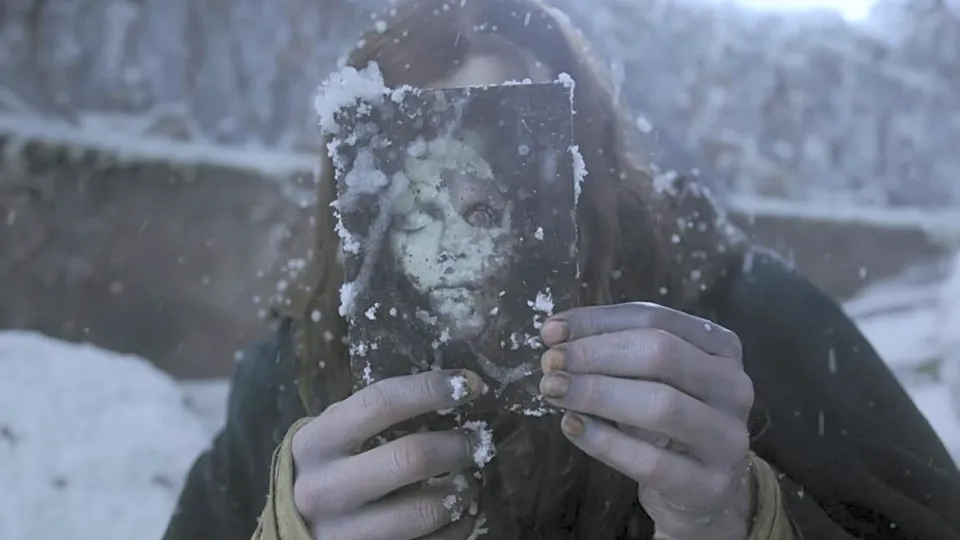If you have a face, Guillermo del Toro will probably destroy it

I was going to write a straightforward review of Frankenstein, but realized that I can't be unbiased when it comes to Guillermo del Toro. I like (if not passionately love) everything he does. I was one of 12 people who saw Nightmare Alley in the theater. I own a t-shirt that says CRIMSON PEAK WAS GOOD. I enjoyed his giant man-bug gorefest Mimic. Hell, I was even entertained by the utter nonsense of The Strain, right down to the dead guinea pig dropped on Corey Stoll's head and passed off as "hair."
I'm incapable of writing a fair and balanced review of Frankenstein, analyzing whatever flaws there may or may not be in storytelling, or discussing any of the technological aspects of it. I was too busy crying three times, gasping at Mia Goth's dresses, and daydreaming about running my fingers through Oscar Isaac's raven curls.
So instead, I'm going to write a little bit about something that's always fascinated me about del Toro's work, a thematic thread, if you will, that runs through most of his movies.
Bro loves jacking the absolute shit out of his actors' faces.
Interestingly, despite its gruesome plot, the face jacking in Frankenstein is minimal. That's not to say that everyone escapes unharmed: one character's nose is pretty graphically broken, while another dies in a fall, obliterating the back of his head. But compared to other del Toro movies, those are relatively tame. Even the Creature (wonderfully played by Jacob Elordi) looks less monstrous than like a puzzle hastily put back together (as opposed to Robert De Niro in Kenneth Branagh's version, who looks like he stuck his face into an industrial fan). His gentle humanity still comes through.
For the most part, however, if you've been cast in a del Toro production, there's a very good chance that your mug is gonna end up slashed, stabbed, shot, run over, or smashed beyond recognition.
Sometimes it's satisfying, as when Captain Vidal, the monstrous villain in Pan's Labyrinth, is slashed, then later shot in the face. But mostly it's just horrifying, as when, near the beginning of the film, Captain Vidal beats a man to death with a bottle, pounding his nose almost flat. It's always meant to ground the viewer in reality, whether it's specifically about the brutality of war, as in Pan's Labyrinth or The Devil's Backbone, or just the fragility of the human body.
Goodness won't always spare you from having your face turned to mush. Dr. Hofstettler, the empathetic scientist/Russian spy who helps free the Amphibian Man in The Shape of Water, is rewarded for his kindness by not only getting shot in the face, but the evil Colonel Strickland sticks his fingers in the bullet wound and drags him around. Strickland himself, a truly underrated cinematic piece of shit, merely gets his throat cut at the end, which is almost a letdown. At least his family can give him an open casket funeral!
In fact, del Toro's most brutal face-related death happens to an innocent character. In Crimson Peak, the heroine's father, Mr. Cushing, after uncovering some disturbing information about her suitor (and his creepy sister), is murdered when a mysterious figure bashes the holy bejesus out of his face against a bathroom sink. Hilariously, even though the sink is broken and there's a large hole where much of his face used to be, Mr. Cushing's death is written off as an accident, which illustrates the sorry state of forensic science in turn-of-the-century New York.
del Toro has noted in numerous interviews that the gruesomely realistic violence in his movies is inspired by his traumatic childhood, where he saw "people who had been shot, or had accidents." He also seeks to emphasize the physical vulnerability of his characters, as opposed to action movie heroes who treat head injuries or stabbings like mosquito bites, something to grimace at and then forget about by the next scene. Someone can bash Arnold Schwarzenegger's face several times against a sink, and he'll just shake it off, make some kind of wisecrack about "sinking to your level," and then snap the villain's neck.
Guillermo del Toro's movies, even the fantasy-based ones, reflect reality: if someone bashes your face several times against a sink, you will probably die. And, most importantly, you will not leave a pretty corpse. Everybody will scream, and yell "holy shit, what the fuck," and probably might even throw up when they see you.
It's that stark reality that makes his movies such a compelling watch, and the heart that beats within his take on Frankenstein: our bodies are fragile, ephemeral, and they say nothing about who we are as people. Dr. Frankenstein's obsessive search for the perfect specimen for his creation results in a creature that's an amalgam of different parts, everyone and no one. The only reminder he has of who he used to be is a blurry photo of a destroyed face.
It doesn't matter. Flesh is ephemeral, and its fragility is our great equalizer. Frankenstein and his creation are on equal footing at the end, both broken, wounded, monstrous. All they have is their humanity: one painfully regained, the other willfully expended.
Comments ()